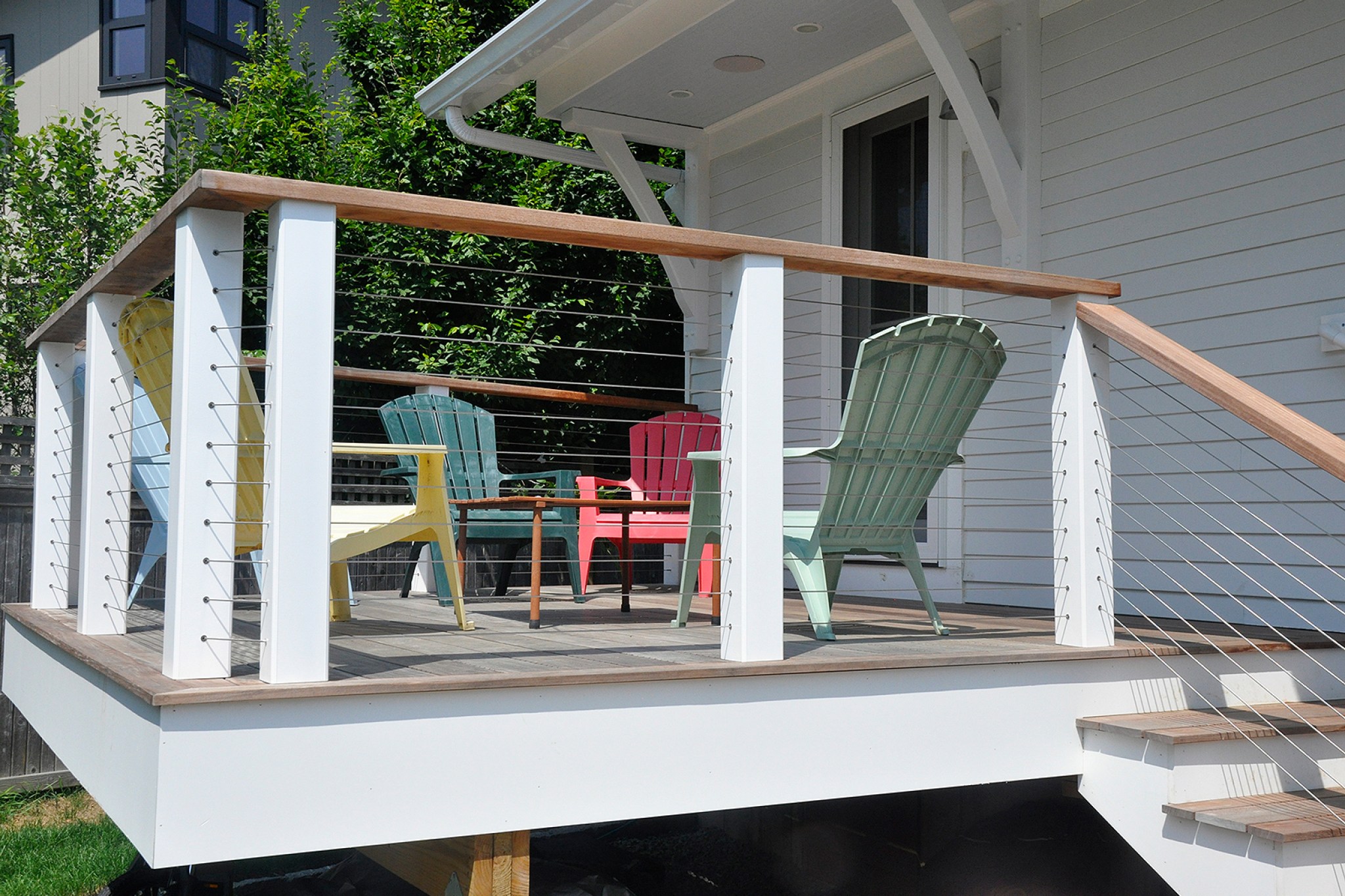A deck is a great way to add low-cost living area. A professionally installed deck costs about $15 to $55 per square foot, compared to the $80 to 400 per square foot cost of an enclosed addition.
You can get the most from this smart investment with low-cost add-ons and special features that increase your deck’s appeal. And that can make your deck one of your home’s most enjoyable living spaces.
Hidden Fasteners for Decking
For years, deck screws have been the fastener of choice. (Nails are too prone to popping out over time.) Deck screws come in a useful range of colors, won’t corrode, and hold exceptionally well. However, even when installed carefully, they cover the deck with rows of little pockmarks — tiny depressions that may have splintered edges and trap dirt.
Enter the hidden fastener. This clever innovation holds deck planks down while leaving the surface looking sleek and minimalist. You can choose from scores of hidden fasteners on the market, each designed slightly differently. In one category, a screw fastens to the framing and grips the side of each plank with barbs. Another option fits into a groove in the side of the plank (some composite planks come with this groove) before being fastened to the joist. Yet another type fastens from underneath the deck, firmly snugging the decking onto the joists.
Installation of hidden fasteners is labor intensive, which adds a premium of about $4 per square foot compared with the cost of installation using deck screws. However, many deck owners find the investment worthwhile, especially if they have selected composite, vinyl, or premium wood decking and want to show off these materials to their best advantage.
Adding Style with Planters
Planters give a deck character. The various shapes and sizes of planters add texture and color. Built-in versions, often made of the same material as the decking, can be positioned to separate seating areas from cooking areas. When planted with tall plants, such as ornamental grasses, they can act as living privacy screens.
Wood planters typically are lined with galvanized sheet metal or plastic containers, or are built to conceal standard pots you can easily remove for cleaning or planting. Planters made of pressure-treated wood sometimes forgo the liner.
All built-ins require some means of drainage, which may mean you’ll have to bore holes in the bottom of the container. Because excess water will drain from the bottom of your planter, you’ll need to think about where you position the planter. If you hire a pro to custom build your deck planters, plan on a cost of $100 to $1,000 per planter, depending on the type of wood and size, according to HomeAdvisor. A carpenter may charge $35 to $100 per hour.
Built-ins aren't your only option. Home centers offer a wide variety of planters available at prices from $3 to $258. Ceramic or cement pots can be a decorative feature, running $5 and up for a two-foot-tall container. Hanging planters (from $5 to $43 each) are a great addition to a pergola or trellis. Planters that attach to the railing ($25 for a 24-inch-long planter) all but disappear when filled with plants.
Cable Railings
Railings are typically required on any deck when the decking surface is more than two feet above ground. They are the most visible part of the deck from ground level and allow you to echo the colors and architectural details of your house. However, if you're lucky enough to a have a scenic vista (or just a really nice yard) you won’t want the railing in the way.
One solution is a cable railing — thin stainless steel cables strung tautly between wood or metal posts. This alternative looks great, preserves the view, and costs about $115 to $175 per lineal foot for a pro installation. Wood costs significantly less, at $40 to $60 per linear foot. To further spare the budget, consider using cable only where the view is important and wood elsewhere. Or, if you're handy, do it yourself.
Taming the Sun With Shade Sails
Overhead structures like wood pergolas and trellises help shield a deck from the sun, adding a dappled shade pattern. But hey can be costly to install and challenging to maintain over the years.
Shade sails are a cool, eye-catching alternative. Made of UV-resistant polyethylene knit fabric, sails are available in triangular, square, and rectangular shapes in a variety of colors. They produce muted, diffuse light, cutting the glare of full sunlight while still permitting light into windows adjacent to the deck. Shade isn't all the sails offer. Many homeowners consider shade sails a form of aerial sculpture and delight in watching them gently rise and fall in the evening breeze.
Shade sails cost $1 to $2 per linear foot. (Expect to pay $9,600 to $20,800 for a custom-built pergola.) For a smaller installation, you can buy a 12-foot triangular shade at your home center for as little as $81. However, bear in mind that a sail can exert a mighty force on a windy day and must be attached to the framing of the house or to steel or wooden poles set in concrete. Professional installation is recommended.
Related: 5 Deck Makeover Projects Under $300
